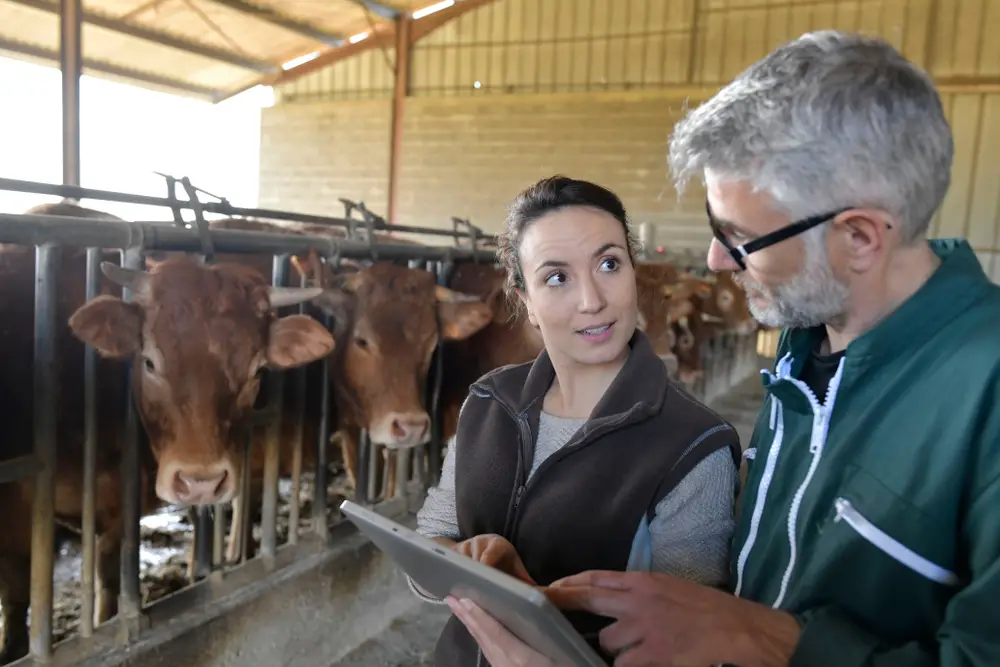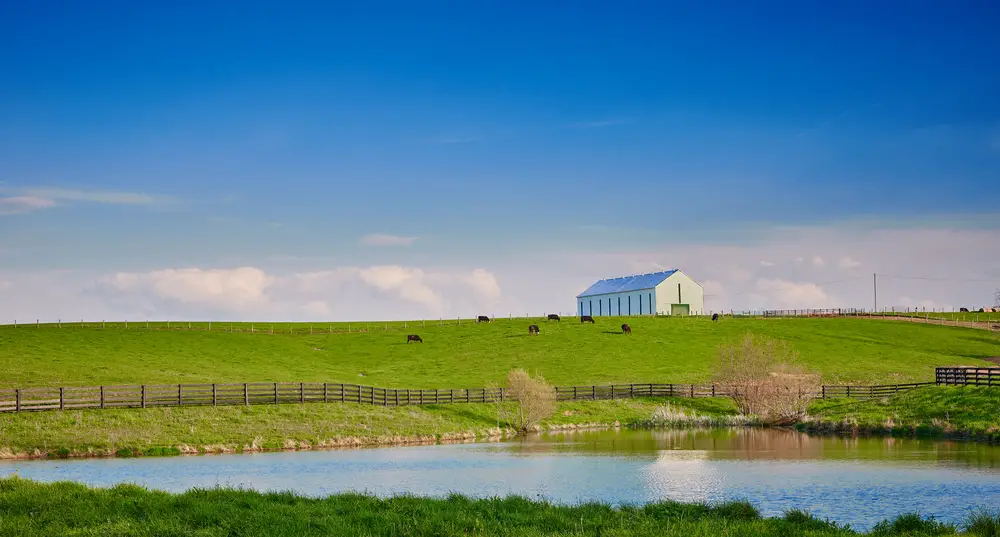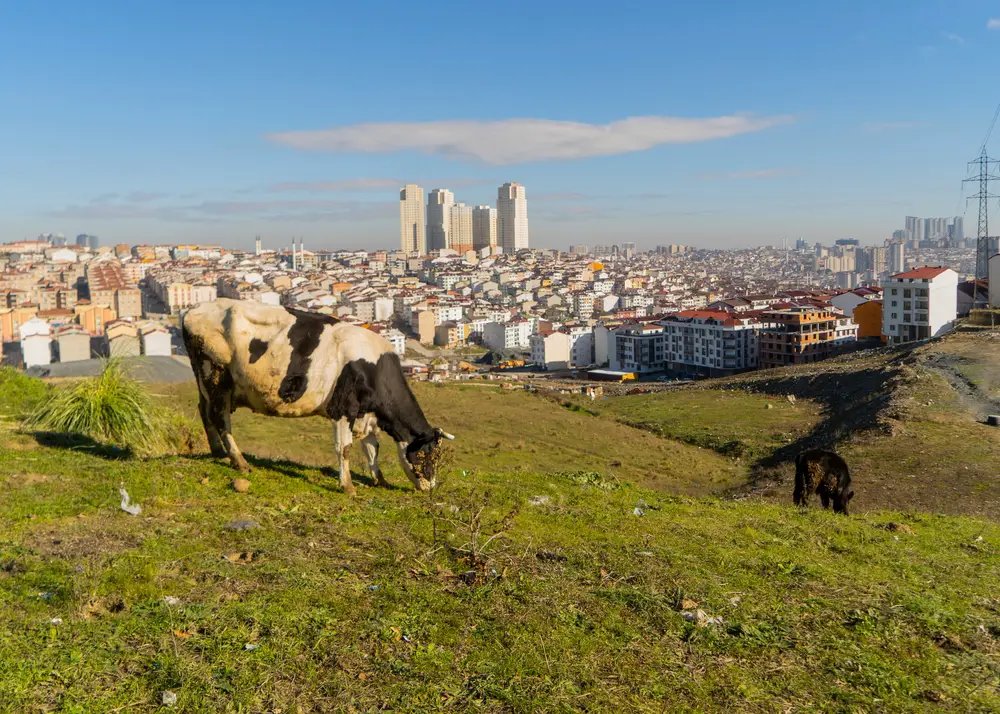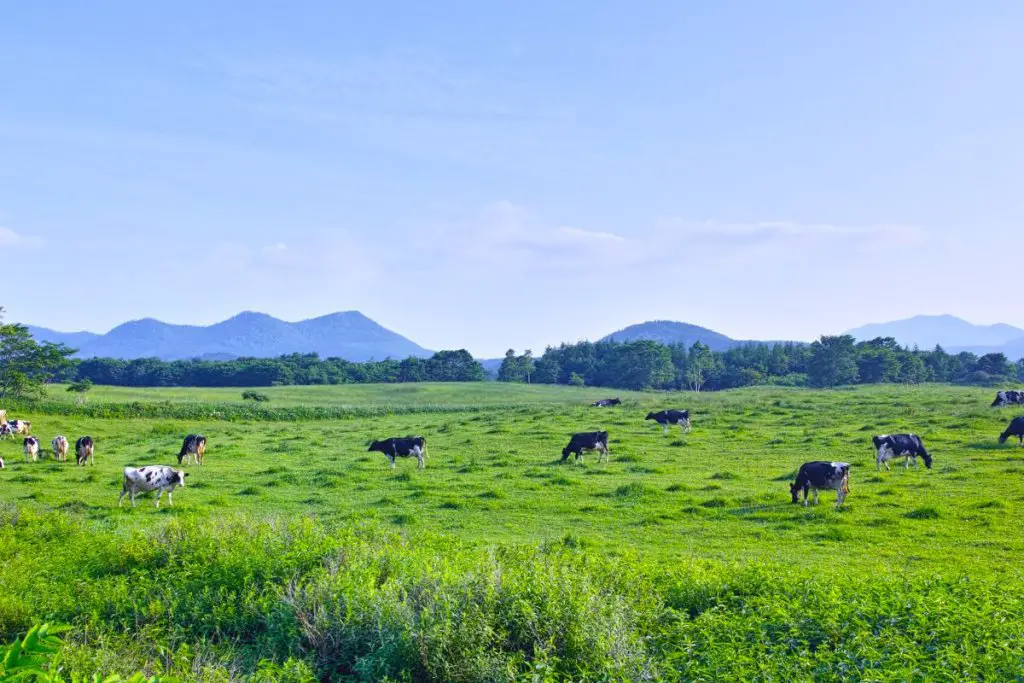Family cattle farming can be an enjoyable and profitable experience over the long term, but it isn't without its risks. Capital, hard work and patience are needed and are often underestimated, especially by first-time cattle owners.
So, you are no longer sitting on the fence: you’ve decided you want to get into cattle farming as a family. But how do you get started? What must you know before you do?
Let’s help you set up for success from Day 1.
The first question is…
Table of Contents
Is Cattle Farming for Me? Us?
Perhaps the most important question before you get into rearing cattle is whether livestock farming suits you. This isn’t a lofty pipedream but a serious endeavor with an eventual payday.
Like many people, you probably already have pets or livestock but want to add cattle to the fold. If this is you, your new endeavor will suit you well since you already know how to handle different animals and what to expect.
However, before bringing cattle into your homestead, you must know that you won’t be the only one interacting with the animals. Your spouse, children, and workers will be involved, too, and it’s advisable to check if they are suited to cattle rearing.
Most cattle breeds are docile and easy to manage, which makes it easier for you to relate with the cows and bulls in a friendly, safe way.
Will each of you also be friendly? Do they all love animals, at least to some extent? Do they care enough about animal welfare? Are they willing to work to raise the cattle for optimum milk or beef production?
Small Scale vs Large Scale Cattle Farming
When it comes to family cattle farming, you’ll most likely practice homestead cattle rearing, which means doing it on a small scale.
The United States Department of Agriculture (USDA) explains a small cattle farm as a family corporation, sole proprietorship, or partnership whose annual gross sales from all its agricultural products are below $250,000.
Other research bodies define a small cattle farm as one whose cattle population is fewer than 100. According to a 2007 Census of Agriculture, 79.4% of small cow-calf farms had 1-49 beef cows, while 11% had 50-99 beef cows.
Most small-scale cattle farmers at the homestead level start with one cow or bull. Some start with 2-5 or more. The main idea is for the cattle to have some company. (Like us humans, animals are social beings.)
Small-scale cattle rearing means that you’ll most likely be producing milk and beef for subsistence, but there’s no harm in selling the surplus for some extra bucks.
If you want to start a family cattle farm at a ‘larger scale’, you can start with 50-100 heads of cattle. Beef or milk production at this level will also be beyond simple subsistence with the sale of surplus produce. You’ll be producing meat or milk and various bovine by-products at a commercial scale.
Benefits of Family Cattle Farming
There are many benefits of keeping cattle as a family. Firstly, you will enjoy what the cattle themselves offer you. Beef cattle provide meat, while dairy cattle offer milk. Dual-purpose cattle farming will provide both milk and beef.
Besides beef and milk, you’ll also have other by-products of livestock production, such as manure, cowhide, and methane (from biogas digesters). However, you must first check with your local laws on what you should do with the manure. Some jurisdictions will require you to dispose of it.
Another way to benefit from cattle rearing is to make young animal sales by selling heifers to dairy farms, steers to beef producers, and uncastrated bulls to cattle breeders for traditional servicing or harvesting of semen for artificial insemination.
Lastly, farm animals make good companions for humans, and beef cattle and dairy cows are no exception. Yes, you can even have a cow as a pet!
What to Consider Before Starting a Family Cattle Farm
There are many factors to consider before starting a small cattle farm in your home. The following considerations only scratch the surface.
1. Your Knowledge of Cattle (Or Lack of It)
You might be interested in raising cattle but have little to no knowledge of how it’s done. You can always learn management practices from cattle industry stakeholders such as the Department of Agriculture.

You can also partner with livestock farming experts like veterinarians, nutritionists, animal breeders, food safety specialists, butchers, livestock transportation managers, and even fellow farmers. Your collaboration with these people will expand your knowledge of cow-raising and the cattle industry.
And, of course, you’ll always have a lot to learn from us at Cow Caretaker. Our guides will make life easier for you with information on breed selection, animal nutrition, producing high-quality dairy products, and maintaining proper animal health.
2. Legal Requirements
Before you set up a cattle farm, you must research whether or not cattle farming is allowed in your locality. Check for land use or zoning issues and permits to obtain. You might have to visit the county clerk near you to get a small business license, depending on the nature of your farm’s operations.
3. Land Availability and Farm Location
The location of your small farm plays a crucial role. While most cattle are hardy and can thrive in most climates, some do better in specific environments. A cow from a hot region may not do so well in a freezing environment.
Also, you must read the local cattle industry atmosphere well if you intend to sell surplus bovine produce.
Are people in your area buying feeder-calves, milk, beef, skin, or processed dairy products? Farmers planning on processing their produce themselves will have to establish high-level factory farms to make hygienic products that are fully safe for human consumption.
Your cattle farm should be in an area where it’s legal to run and safe for the neighbors so they won’t have to report you for your farm’s environmental impacts.


Land size and availability are other crucial aspects. How much land does a cow need? According to the USDA, a pair of pasture-raised cow calves requires about 1.5-2 acres over 12 months.
About 27% of all US beef cows (2019 USDA data) were raised by ranchers in feedlots with less than 50 cows. Fewer farm animals thrive better on smaller farms.
You must ensure your herd will have enough cattle feed and fresh, clean drinking water throughout the year. Overstocking animals on any agricultural land will have undesirable environmental impacts like excessive greenhouse gas emissions, overgrazing, deforestation, and climate change.
Since cattle are ruminants and most breeds are heavy feeders, you must have a constant supply of pasture grass, hay, legumes, commercial feeds, and other plant materials for herbivores.

You can subdivide your land into several potions, such that the cattle do not graze all over but instead deplete the grass from one potion before moving on to allow it to regrow. This practice promotes farm sustainability and the conservation of farm ecosystems and the overall biodiversity.
Adding farm inputs like fertilizers can help pasture recover faster, but you must topdress the fields with the right fertilizer and allow enough time between application and grazing to ensure optimum animal health and, consequently, human health.
4. Cattle Shelter and Other Farm Structures
Regardless of the size of your farm and the number of cattle you have, putting animal welfare first requires establishing safe, animal-friendly shelters such as cow sheds or barns.
Your cattle will stay in the shelters for protection against the elements like direct sunlight, snow, winds, and cold. Structures for storing produce and fodder are also necessary for successful livestock farming.
Expect to pay anywhere from $20,000 and above for even a small structure, with most farmers opting to build one themselves.
5. Breed Selection
The wrong breed will frustrate you. To choose the right breed, two crucial aspects come into play—the purpose of the animal and cattle personality.
If you want optimum milk production, you’ll want to keep Holstein Friesian, Jersey, Milk Shorthorn, Guernsey, and Ayrshire cows. These cows also have good personalities.
If you want to raise cattle for the beef industry, you’ll go for early-maturing and docile beef breeds such as Hereford, Aberdeen Angus, Gelbvieh, Beef Shorthorn, Charolais, Beef Devon, and Simmental.
Once you take care of the crucial considerations, there’s no holding you back. Your small family cattle farming venture will be good to go and set up for success.
Closing Thoughts
There are many dynamics to cattle rearing, even on a small scale as on a family farm, and you’ll want to nail everything to succeed right from the start. Essentially, you’ll want to gather your hay while the sun still shines.
Cattle farming isn’t cheap, with the cost of cattle, feed, vaccinations and structures often being underestimated by newcomers. A group of 12 cattle could cost $50,000+ when accounting for barn structures that need to be built. We hope this transparency helps you decide if this is an endeavor worth pursuing.
If you do decide to make a start, we are here for the long haul to help set you up for success. Cattle farming can be profitable, but you’ll need to plan out several years into the future.
